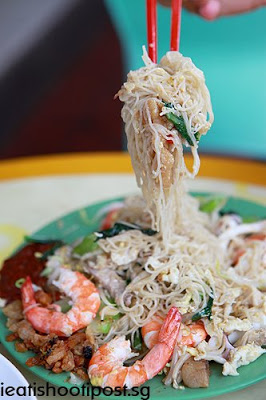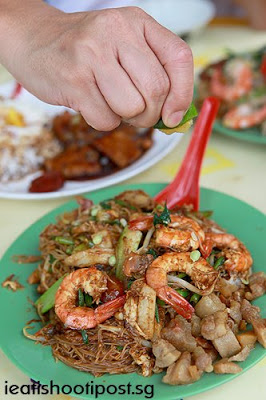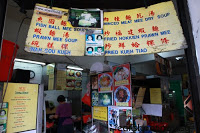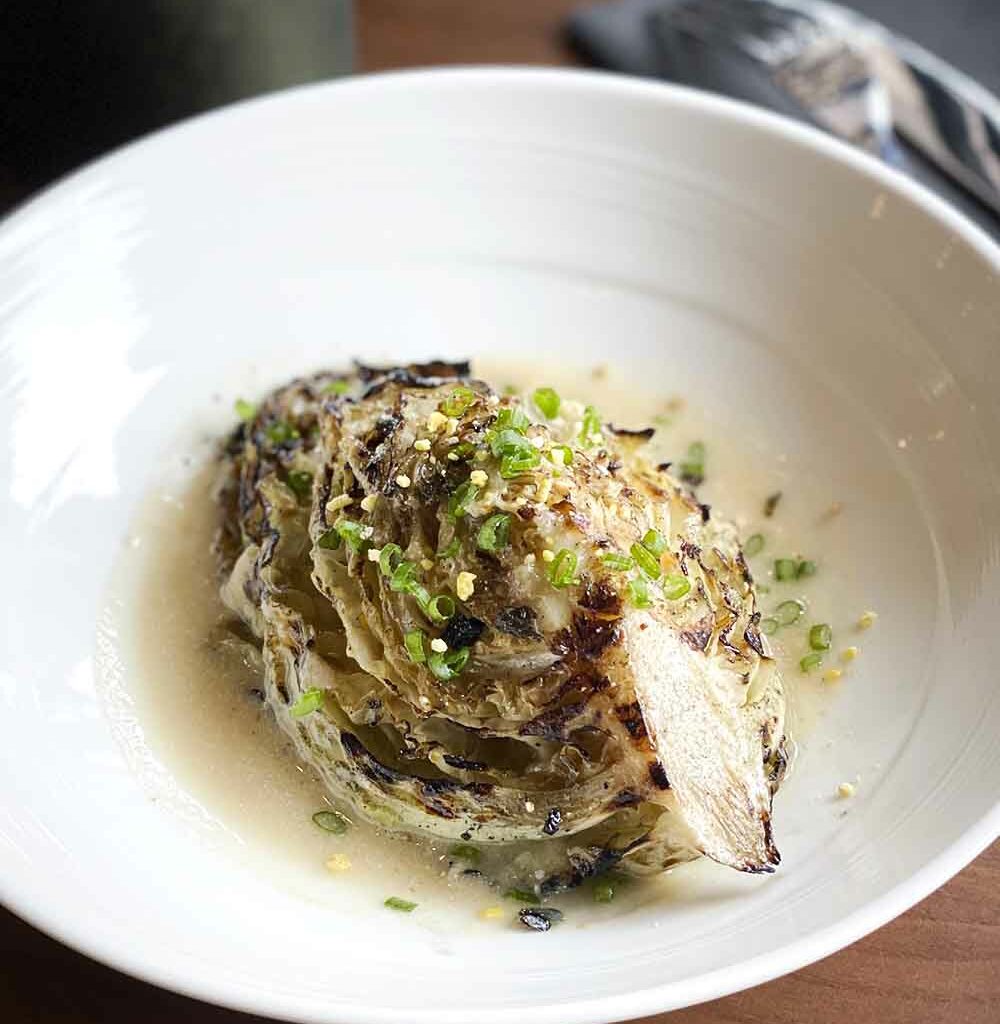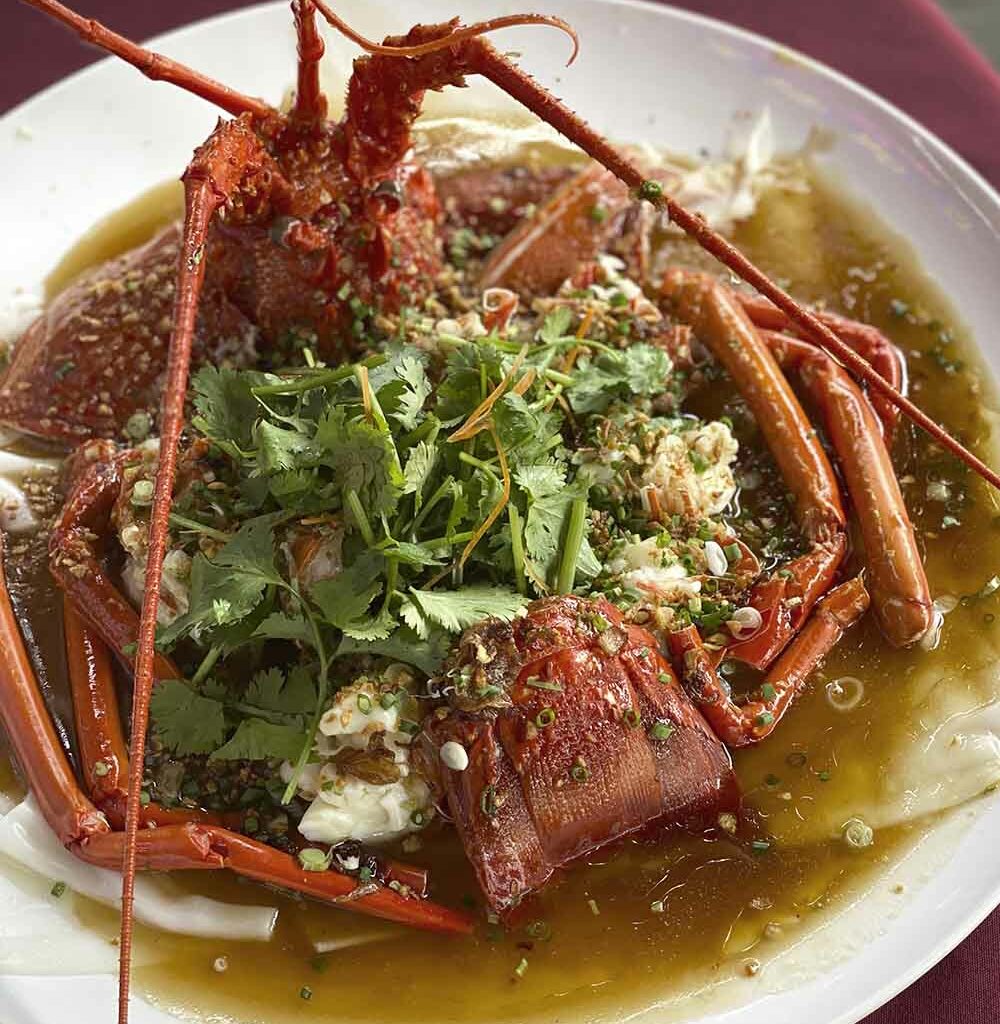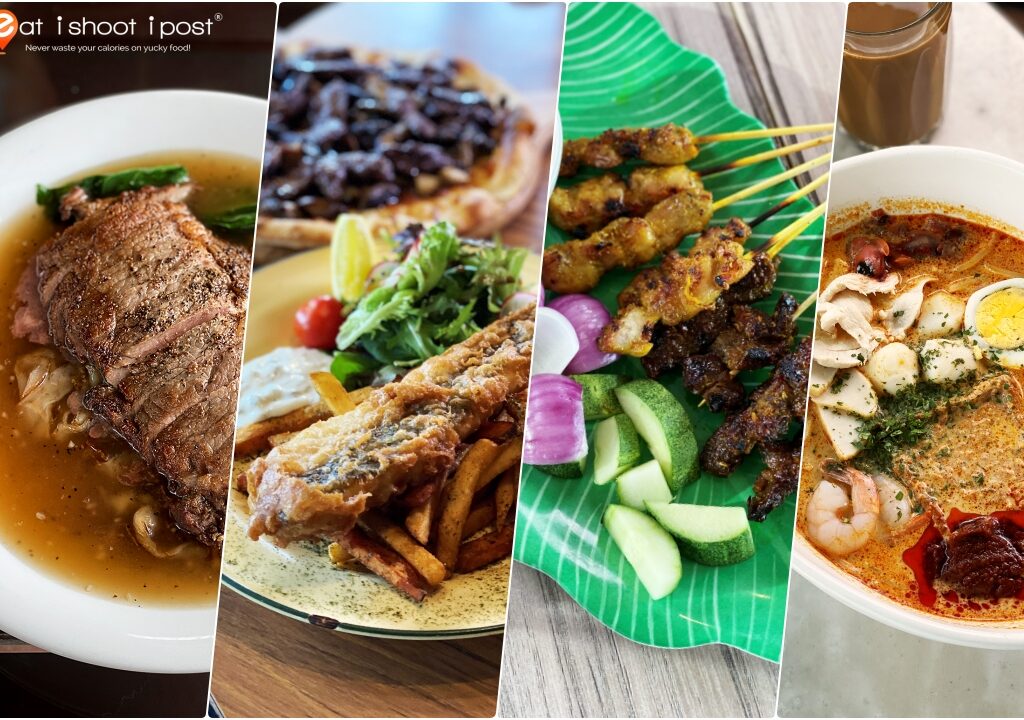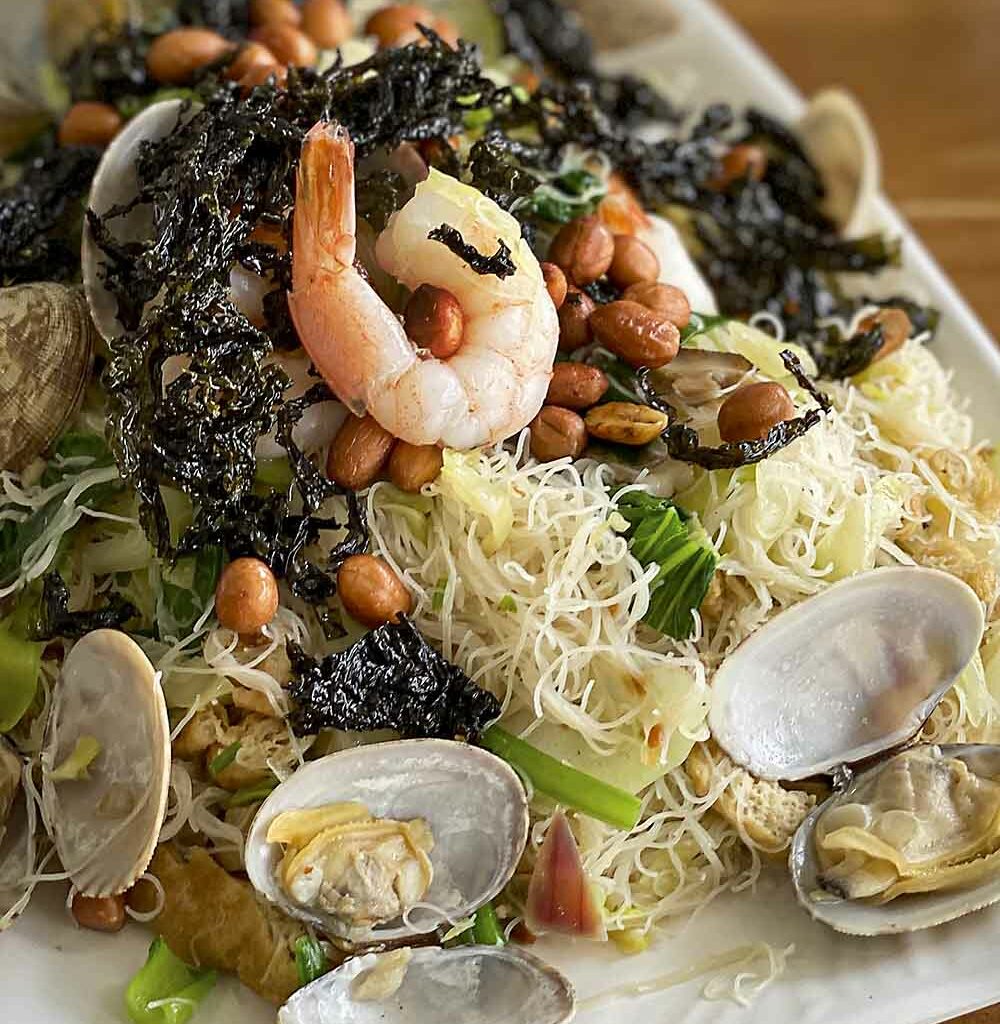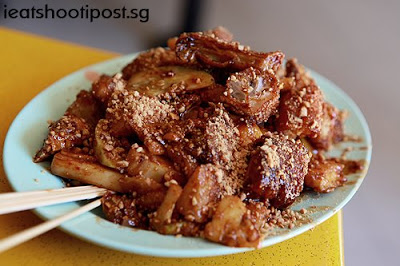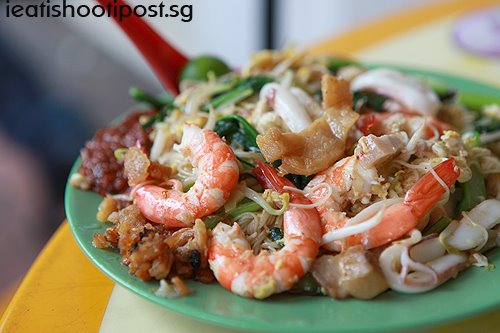
Fried Mee Sua with extra ingredients $5
It is heartening to find that some hawkers don’t yet seem to have heard the Health Promotion Board’s plea for less oil and more vegetables. Now, please, if you have a cholesterol problem, do cut down on all the lard and oily stuff and please stop reading this post as it will lead you to temptation. But if you can afford it and wish to pamper yourself every now and again, then here is where you can find a hawker who doesn’t prioritise health over taste.
I have blogged about the Hokkien Mee at Yong Huat previously, but I did not realise that they had a few other interesting dishes until our Makan Kaki Cactuskit alerted me to it. Basically, this stall tries to do everything. From Mee Pok to Hokkien Mee to Char Kway Teow, they seem to have it all, and even some more. The one ingredient that all the food seems to involve around is pork lard which seems to be in plentiful supply at the stall.
I guess pork lard is one of those things that you go “How can something that feels so good be soooooo bad?” As with all things, it is because it tastes good that you tend to eat too much of it that it becomes bad for you. The problem with pork lard is that it is cheap. If pork lard was expensive, you won’t be able to afford to eat it often enough for it to be bad for you. Just take Foie Gras for example. If it were cheap, then it would have the same reputation as pork lard. But because it is so expensive, you never really get to eat it often enough to push up your cholesterol levels.
But there is no doubt about it that pork fat (or any other fat really) is tasty. Whether it is in a Tonkatsu, Bacon, Satay or simply used to fry noodles, pork fat is tasty. The reason it is tasty is because we are all programmed to enjoy it. From the perspective of survival, fats are high in calories, so in the good old days when we were still going around in animal skin loincloths, being able to find enough calories was a matter of survival. Fat is a great source of energy and when you have a layer of it under the skin, it keeps you warm as well.
So because we need fats, we were created with the ability to enjoy it so that we will want to instinctively crave for it. But when you consider that we have the five senses of sweet, sour, bitter, salty and umami, you would wonder where the sense of taste in fat actually comes from. Each of these senses are there in order to make sure the body gets its source of essential nutrients. So you have a sweet receptor to make sure you get enough carbohydrates and an umami receptor so you get enough proteins. These receptors get triggered on your tongue and sends a message to the pleasure centre of your brain so that when you eat the food, it signals “Shiok!”. But what of fat? We often say fat is what makes food tasty, but fat does not really trigger off the umami receptors because they are programmed to recognize glutamate, which is an amino acid (protein). Neither is it sweet or salty or sour or bitter. So why do we find fat so enticing?
The answer to that problem lies in the fact that we are not as clever as we think we are. We only discovered the possiblity of an umami receptor at the turn of the century and it wasn’t until a few years ago that scientists confirmed its existence. So now there is a lot of research going on to find out if there is a fat receptor. The evidence seems to be there because some scientists managed to breed some mice without a specific protein called CD36 and found that these mice do not like fat at all! Other scientists have found that the sensation of fat is indeed found in the oral cavity. So putting these evidence together, it seems that out of the 10,000 taste receptors that we have on our tongue, there should be some of them that are specifically triggered off by fat. I do hope some Singaporean scientist can discover it so that we can call it the “Shiok” receptor.
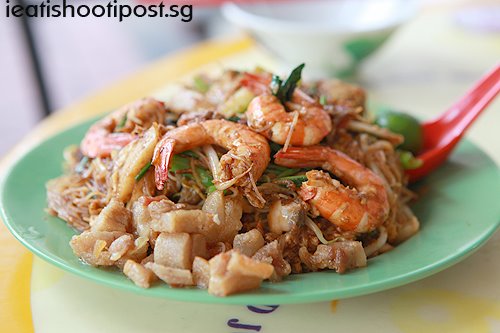
Fried Bee Hoon with sweet black sauce $4
Coming back to this stall. As I mentioned earlier, they basically fry Hokkien Mee and Char Kway Teow plus any sort of permutation and combination that you like using these basic two flavours. Of course the one flavour that predominates is the pork lard, which makes anything taste good because of its effect on the “Shiok receptor”. So you can ask them to fry Mee Sua, Hokkien Mee Style or Bee Hoon, Char Kway Teow style and it can all be done for you.
Tastewise, the Mee Sua we had that day was very tasty but I felt it lacked enough time in the wok to develop the wok hei flavour. Same goes with the fried bee hoon. Still as already mentioned, pork lard will make anything taste good, so you will still go back to the office very satisfied.
Conclusion
Your boss getting you down? Depressed over the state of the fish in your fishbowl? Pamper yourself with a plate of freshly fried fragrant noodles with pork lard. Then diet for the rest of the week.
Read my previous post on Yong Huat



